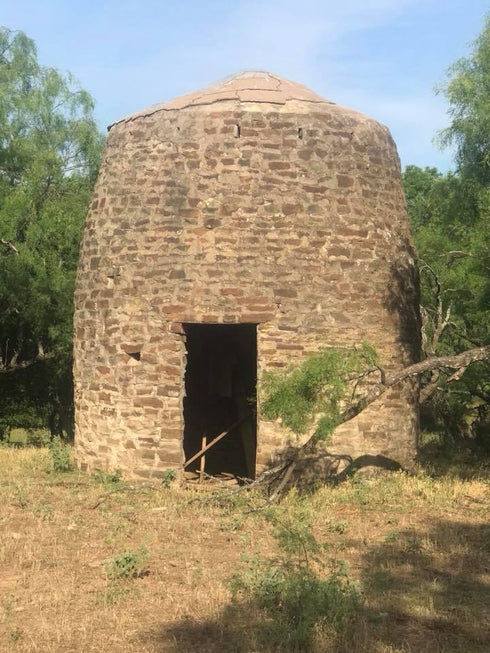
HORACE W. VAN CLEAVE
Assistant Professor, Department of Entomology
Texas A&M University
I AM HAPPY to meet with you and give a brier outline of the research underway at Texas A&M involving pecan insect pests. We want you to feel that this is your program and when you have the occasion to be on the main campus at College Station, I hope that each of you will visit our laboratory and see first-hand the work that is underway. It was through the efforts of the Texas Pecan Growers Association that we received substantial increase in research funds and I would personally appreciate your continued counsel and guidance as we continue our efforts to achieve practical control measures for the several destructive insect pests attacking pecans in Texas.
Only a general outline of the biology of this pest is known. Such studies have never been conducted under Texas conditions. Damage to the crop by this pest is generally reported to fall into two categories: (1) premature nut drop during June and July (2) shuck feeding in pecans during August, September and October resulting in improperly filled kernels.
Control of the pest has varied from poor to practically nonexistent. Texas research workers in the past have limited their recommendations to the plowing under of shucks containing the overwintering larvae in an attempt to reduce the following year's populations. In those states where chemical sprays are recommended, often it has been pointed out that chemical sprays did not give completely satisfactory results. As the demand for high quality nuts increases, a control for this pest must be found to provide growers with the means to achieve the quality production for which they are striving.
Our work on the biology and control of the hickory shuckworm began in the fall and winter of 1964. Pecan shucks were obtained from all parts of Texas and caged under 3’x 3’ pyramid emergence cages to collect data on moth emergence patterns as well as information on parasites and predators attacking the overwintering shuckworm larvae. All material collected from these cages which could not be positively identified by the specialists in entomology at Texas A&M was submitted to the U. S. National Museum for specific determinations. These collections will form the basis for any future biological control studies which might develop. To have a sound basis for study, several years’ data are needed on moth emergence patterns as well as parasite and predator collections, so this phase of the work will be repeated each year until the study is completed.
Following the expansion of the research budget in the fall of 1965, efforts were made to obtain the services of a qualified technician to continue and expand this portion of the project. During the winter and spring of 1966, the emergence studies were repeated and intensive studies were begun on the biology of the shuckworm by this technician.
Since that time, data have been gathered in the field on the feeding habits of the first and second generation larvae. Limited numbers of early instar larvae collect in the field have been successfully reared to the adult stage under laboratory conditions using an artificial diet. It is hoped that this phase can be perfected further and expanded to allow for the production of adequate numbers of specimens for future laboratory studies on the biology and ecology of this pest.
This laboratory colony would also serve as the source of specimens for basic dosage mortality investigations which I would be conducted during the winter and
PROCEEDINGS TEXAS PECAN GROWERS ASSOCIATION 81
early spring periods to aid in developing a year-round research program. Such dosage mortality curves would serve as a basis for future comparisons of the relative effectiveness of standard and new insecticides, detection of insecticide resistance, etc. Although these procedures are now common practice in certain insect pest complexes, such as the bollworm-budworm complex of cotton, no such data are available on any pecan insect pest and, to my knowledge; no worker in the U. S. has a program underway to fill this need.
This summer we plan a field test to evaluate the two chemicals (Guthion and EPN) currently recommended by USDA for hickory shuckworm control, to determine their effectiveness under Texas conditions. In addition, a grant-in-aid was given to the project, by Chevron Chemical Company in April 1966, to assist in the evaluation of Phosphamidon against these two other compounds. This test will be conducted on the University plantation pecan groves during August, September and October of this year. This will provide a basis of reference on the effectiveness of these chemicals under Texas conditions and will help to serve as a basis for comparison in future chemical control experiments involving this species.
Pecan Weevil
Some preliminary studies in Oklahoma and Texas indicated that it might be feasible to control the pecan weevil with soil application of certain insecticides. In January of 1965, we conducted surveys to locate populations which were sufficient to evaluate this approach. Weevils were found at Junction, Texas, in adequate numbers to justify such a test and arrangements were made with the Kimble County Pecan Growers Association to conduct the test during the following August.
On July 28-29, 1965, nine insecticides (Guthion, Ethion, Aldrin, Baygon, Heptachlor, Chlordane, GC-6506, and NIA 10,242) were applied to the soil at maximum dosages recommended by the appropriate technical representatives of the chemical companies involved. Treatments were replicated four times and randomized along with the appropriate number of check plots. To trap emerging weevils, 3’ x3’ pyramid cages were placed over the plots. Apparently, due to a lack of rainfall to trigger adult emergence, only limited numbers emerged throughout the range of the weevil in West Texas that fall. Although four compounds appeared to give some control, statistical analysis of the data failed to show any significant differences between any of the treatments.
The emergence cages were left in place to prevent re-infestation of the treated areas from the fall emerging larvae as they moved from infested nuts to the soil. In February 1966, the treated areas were dug to a depth of 12 inches and the soil was sifted to determine the number of larvae present in the soil following the chemical treatments and adult emergence. No significant differences were found between the treatments indicating that these applications of insecticides had no effect on larval populations.
During the same period, additional collections of larvae were taken from the Junction area for preliminary insecticide screening studies in the laboratory at College Station. During the spring and early summer, a number of insecticides were tested at extremely high concentrations using both soil treatments and dip techniques but none of the compounds checked so far have given any control of the larvae. Additional screening of compounds is anticipated using the injection test technique in which measured amount s of insecticide are injected directly into the body cavity of each larva.
From weevils collected from the soil in June, laboratory screening of insecticides against the adult stage was begun on June 6, 1966. Several compounds appear promising at present and will be subjected to small cage testing later in the summer as more adults become available. It is hoped that we will have several promising compounds to subject to large field tests during late summer and fall of 1967.
While collecting specimens for various purposes at Junction at irregular intervals from February through June 1966, variations were noted in the larvae to
82 PROCEEDINGS TEXAS PECAN GROWERS ASSOCIATION
adult ration present in the soil. Since these ratios were erratic and apparently formed no readily recognizable pattern, plans were made to place several hundred larvae in individual cages in the soil as they leave the nuts this coming fall. By caging the specimens individually, samples of the population can be taken at regular intervals without disturbing the remainder. The total study population will be split into three groups and subjected to various sets of conditions. The first group will be returned to the soil a Junction, Texas, where this study population will be collected; another group will be placed in individual cages inside large redwood boxes containing soil and covered by a screened lid (double caging is felt to be necessary since the pecan weevil is not known to occur in the College Station area); and, the final group will be held under laboratory condition at College Station. Although it may take a year or more before any significant information can be obtained from this study, it is certainly a necessary step in attempting to gain a better understanding of this insect under Texas conditions.
In addition to the biology and insecticide control studies underway we have plans for a much more basic type of study on the weevil. In December 1965, a grant application was submitted to USDA for support of exploratory studies on the use of ionizing radiation and chemosterilants for control of the pecan weevil. This application, submitted by Dr. H. W. Dorough and Mr. H. W. Van Cleave, was approved for $54,367.00 to begin June 1, 1966, and continue for 3 years. Work has begun on assembling laboratory equipment, cages, etc. for this study. We will be contacting many of you this fall to collect the large number of specimens necessary for such an investigation. Any help that you can give us or our assistants will be greatly appreciated.
Pecan Nut Bearer
Compared to the two preceding species, the growers have a much better list of insecticides for the control of the pecan nut casebearer. Since our resources and time are not unlimited, we are placing most of our efforts toward the development of practical control measures for the pecan weevil and hickory shuckworm. We are conducting some studies involving the casebearer, however.
It appears that one of the major factors involved in poor control of the pecan nut casebearer is improper timing of the spray application for the first generation larvae. With this in mind, we have been cooperating with Mr. B. G. Hancock, Extension horticulturist, in the refinement of the banding technique for the collection of pupae from the over-wintering generation. This procedure is becoming more widely used throughout Texas and the analysis of the data from the various locations over the State will add greatly to our basic knowledge of this pest.
We have also conducted preliminary studies on the laboratory rearing of this pest using artificial diets. Still working on a limited scale, we have been able to rear this insect from early instar larvae through to the adult stage. We hope to expand this work and conduct dosage mortality studies, ecology studies, etc. on the casebearer in a manner similar to what was discussed under the section on the hickory shuckworm. We feel that in the long run this will have very definite beneficial results that will help all pecan growers.
Use of Systemic Insecticides
Mr. Denman will discuss this portion of the program as it applies to aphids, so I will not elaborate on it. In addition to the aphid studies, we have made soil applications of four systemic insecticides to determine what other pecan pests can be controlled by their use. These applications were made in April 1966, to trees in University plantation pecan groves and tests are still underway. It appears that one of the compounds may be effective against the pecan bud moth.
I hope that this discussion has given you some idea of the program that we have underway and I hope that in the fairly near future we will have a number of new recommendations to make that in your efforts to control insects in your groves. Again, I would like to invite you to visit our laboratory at Texas A&M and discuss the program with us.

